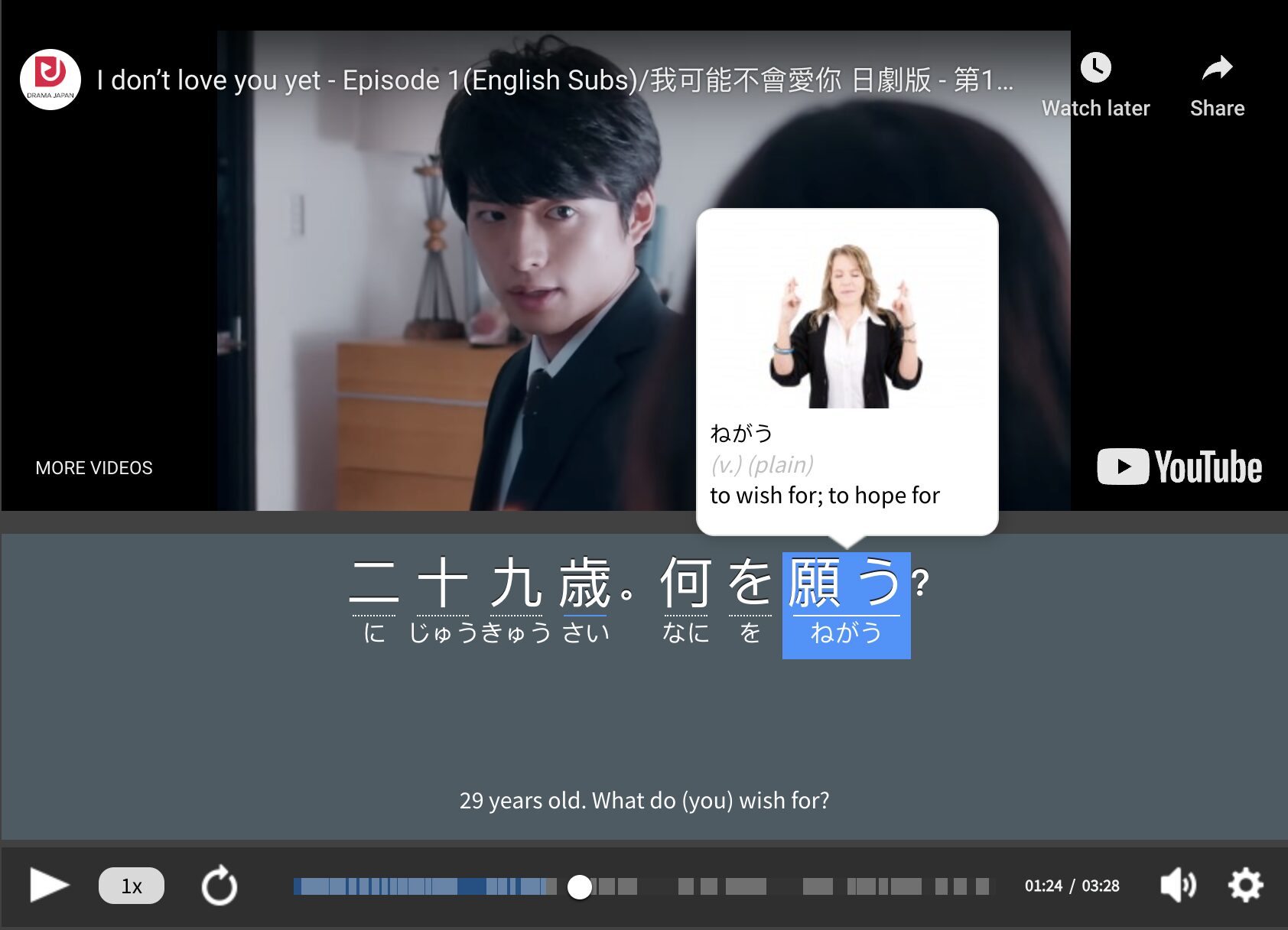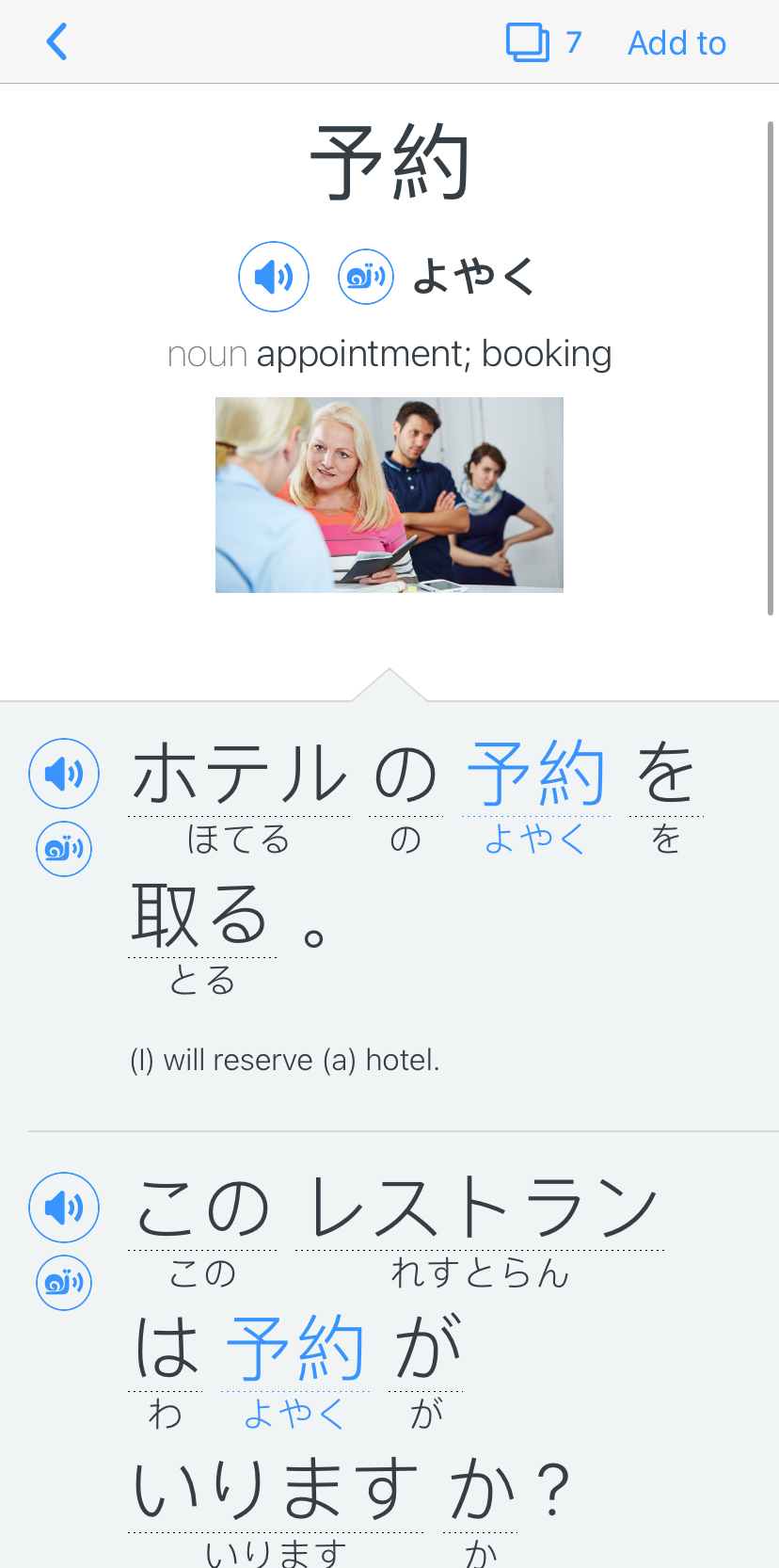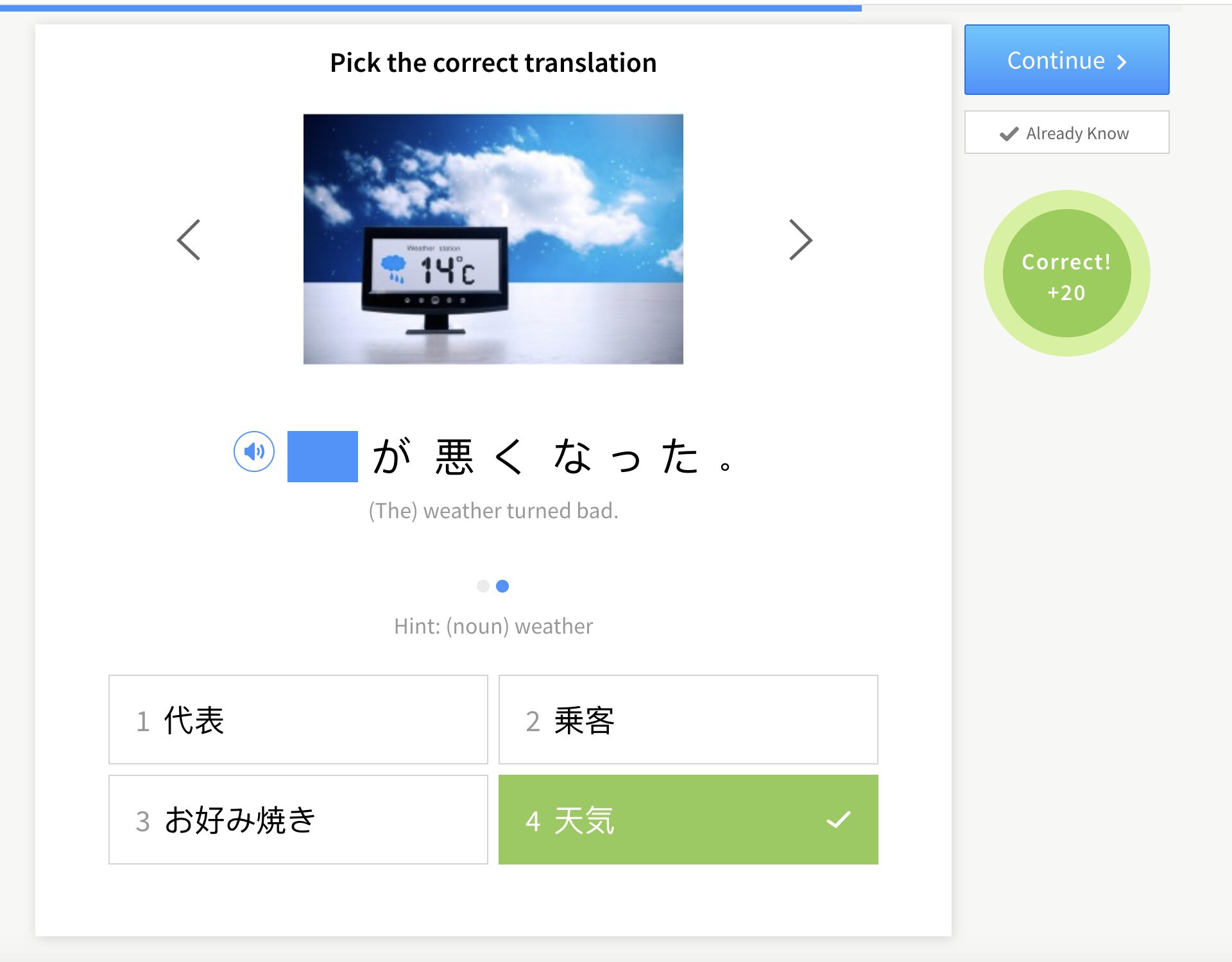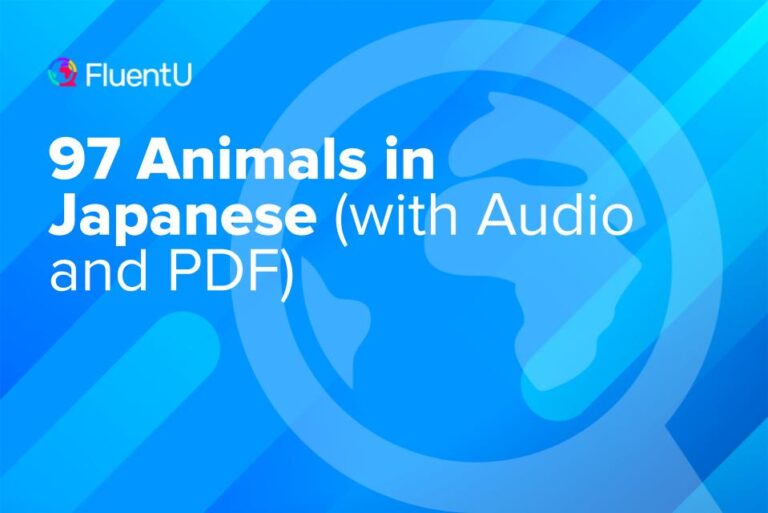How to Learn Japanese in 30 Days [Zero to Conversational]
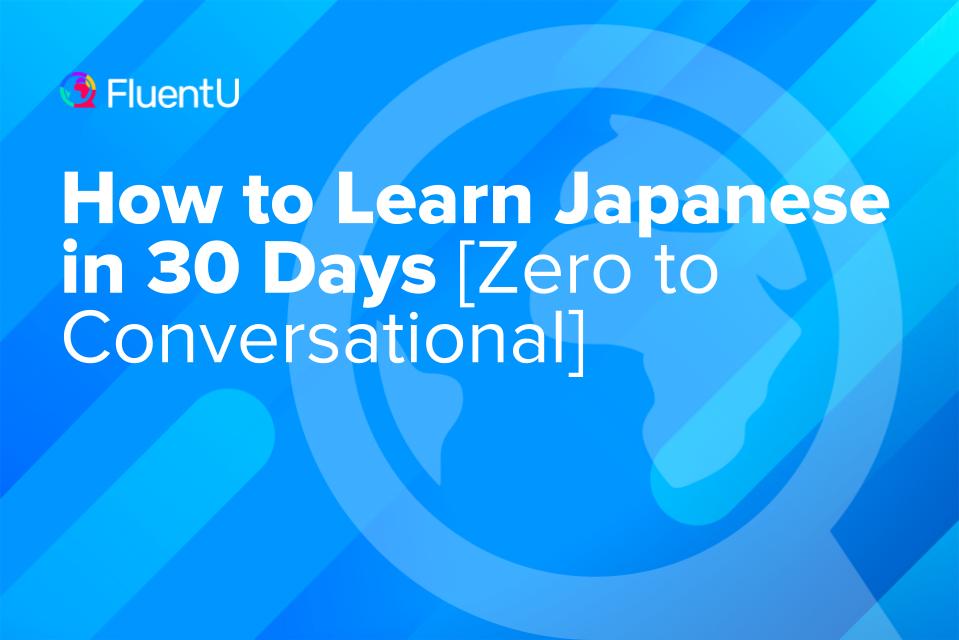
You’ve probably seen blog titles like “Get Fluent in an Hour!” and “Learn 5,000,000 Kanji in Two Days!”
I talk regularly to Japanese friends and know plenty of other learners who have reached a high level in the language—and I’ll still say that these wild promises are pretty ridiculous, considering everybody learns a second language differently and at different speeds.
So instead of telling you how to learn Japanese, this post has a game plan and resources designed to help you learn to speak Japanese in less than a month.
These are the techniques and tools that helped me become conversational—and they can work for you too.
Download: This blog post is available as a convenient and portable PDF that you can take anywhere. Click here to get a copy. (Download)
1. Use the Best Apps and Resources
Set Your Pace and Schedule
There are so many apps out there with daily lessons meant to fit a pace that you’re comfortable with.
Want to jump right into hour-long lessons? Go for it! Only want 15 minutes a day? This is doable.
But to really get a handle on Japanese in four weeks, I suggest studying Japanese for 30 minutes a day at a minimum—aim for more study time whenever you can!
Start with Reputable Apps
Japanese learning tools and apps allow you to study wherever you are. Make use of that commute or replace your morning newspaper for a month with these, instead.
You have tons of choices—there are Japanese apps focused on reading and grammar, for instance, and some of them are free too. Of course, you’ll also need reliable dictionary and translation apps.
The language-learning apps below are reputable, well-known options for learners. They also all have very different approaches. Try them out to see which learning style is most effective for you:
- Duolingo uses bite-sized lessons that build up vocabulary and grammar knowledge for a solid basic foundation.
Within the first few lessons, the program will have you arranging words into structurally sound sentences. It introduces vocabulary as it teaches grammar, providing a solid foundation for beginners. Here’s an in-depth review if you’re curious about it!
- FluentU uses an immersive approach to learning, by helping learners understand native Japanese speakers.
FluentU takes authentic videos—like music videos, movie trailers, news and inspiring talks—and turns them into personalized language learning lessons.
You can try FluentU for free for 2 weeks. Check out the website or download the iOS app or Android app.
P.S. Click here to take advantage of our current sale! (Expires at the end of this month.)

- Memrise uses spaced repetition and user-made visual mnemonics to ensure you drill each word into your long-term memory for a large core vocabulary. It pairs new vocabulary with exercises and videos that feature different native Japanese speakers.
Click here for a review that goes over its pros and cons.
- LingoDeer provides quick written and audio lessons that dive right into the foundation of Japanese with grammar lessons that build vocabulary naturally.
LingoDeer’s approach is by far the most grammar-oriented on this list, but it structures lessons in a logical and approachable way. You can learn all about it here.
You can test out more Japanese learning apps with this up-to-date list:
6 Best Apps to Learn Japanese in 2025 | FluentU Japanese Blog
What is the best app to learn Japanese with? That depends on your desired learning experience, so we’re covering our top six options for all types of learners. Plus, we’ve…
2. Learn Japanese Grammar Basics
Learning a language isn’t just about memorizing vocabulary or studying a textbook full of common phrases. It’s also important to get a handle on Japanese grammar and sentence structure.
When I was in situations with unfamiliar vocabulary—there were a lot!—I wasn’t thrown off completely because I understood the grammar.
Another benefit is it’ll give you more versatile use of all the words you’re learning.
Below are some essential grammar concepts every Japanese learner should know.
Study Particle Usage
Japanese particles are words that come after modified nouns, adjectives, verbs and phrases.
These little words are an integral part of the Japanese sentence structure and indicate parts of speech, questions and exclamations and much more. Certain particles can also help show enthusiasm, cuteness, aggression, humor, etc.
To learn about Japanese particles and how to figure them out, check out these resources:
- “How to Learn Japanese Particles” from JLPT Boot Camp helps learners navigate the often-confusing world of particles with a guide on how to learn them. (We recommend you read this one, first!)
- “The 17 Most Important Japanese Particles and How to Use Them” by FluentU will fill you in on the top Japanese particles, with plenty of example sentences that clarify their usage.
- “The Japanese Particles Cheat Sheet” from Tofugu contains particle information in one condensed information sheet.
- “Introduction to Particles” by Guide to Japanese breaks down each particle with explanations and examples.
- “The Ultimate Guide to Japanese Particles” by italki has even more explanations and sample sentences for a solid understanding.
Get to Know Essential Grammar Forms
Japanese grammar forms or “verb forms” indicate various types of past, present and future tense. English also has verb forms, but it’s significantly different from Japanese so it may take some getting used to the Japanese verb forms.
The Japanese language has several verb-based tenses, including the plain, “te,” conditional, potential and imperative forms.
Learn the basics of Japanese grammar forms here:
- “Japanese Causative and Passive Verb Forms” from Guide to Japanese is like a textbook page online: you’ll find a no-frills explanation of the causative and passive verb forms here.
- “Using Japanese Verb Bases” by Free Japanese Lessons introduces all the different verb endings in one easy-to-use chart that you can utilize to guide your learning.
- “Japanese Verb Forms” on CosCom defines each of the above verb forms in more detail; the two resources work remarkably well together.
You can also bookmark this as a reference guide for common verbs in Japanese:
https://www.fluentu.com/blog/japanese/japanese-verb-list-change/
Tackle Beginner Vocabulary
Whether you’re studying for a trip or for your own enjoyment, having a core vocabulary will create a solid foundation on which you can build your future learning. After all, you can’t learn grammar if you don’t know any words to string into sentences.
You might be surprised at how there are actually a lot of Japanese words you know already, from loanwords to food! Use this guide to expand your vocabulary and build a good foundation:
174 Basic Japanese Words and Phrases to Survive Everyday Life in Japan | FluentU Japanese Blog
Learn essential Japanese phrases right away with this list of 174 simple Japanese words and expressions that will prepare you for any daily conversation! Whether you want…
You can stock up on even more important vocabulary words and travel phrases with these awesome resources:
- “Easy Japanese Vocabulary List & Quiz” from the NHK is an interactive vocabulary list and quiz with plenty of great core vocabulary words (as well as some more unique words).
- “Basic Japanese Words” by Rocket Languages has some of the most common basic words all learners should start with, as well as links to more useful vocab.
- “20 Essential Japanese Phrases for Travelers to Japan” by Boutique Japan has you covered if you plan to visit Japan with useful Japanese travel phrases. Not enough for you? Check out even more Japanese travel phrases.
Understand the Japanese Word Order
Okay, I know this may sound kind of scary.
Japanese word order is very different from English. But knowing even the bare-bones of Japanese word order pays off a lot—it’ll help you understand the basics of a sentence, even if you don’t know all the words being used.
If you’re stuck on how Japanese word order works, look into these useful guides:
- “A Visual Guide to Japanese Word Order” by 8020 Japanese is a great resource for visual learners that breaks down Japanese word order through illustrations.
- “Japanese Sentence Structure: A Beginner’s Guide to Forming Japanese Sentences” from FluentU is a great starter guide to forming sentences, questions and some more advanced ideas.
3. Get the Gist of the Japanese Writing Systems
I mentioned earlier how important it is to focus on speaking, listening and comprehension to learn passable Japanese in a month. That being said, it’s still wise to understand the basics of Japanese writing systems.
Kanji is a complicated writing system that’s beyond the scope of this guide. Even native Japanese speakers spend years achieving fluency with kanji—learning 2,000+ characters isn’t doable in just a month!
However, you should definitely look into some of these resources that explain the common Japanese writing system called hiragana:
- “Learn Hiragana: The Ultimate Guide” by Tofugu is a thorough visual guide to hiragana that uses images to help readers remember characters in a way they’ll never forget.
- “Learn Japanese Hiragana” by Guide to Japanese has handy charts with stroke order and pronunciation guides for each character.
- “Read, Write, Repeat: Japanese Hiragana Practice for Beginners” from FluentU is a massive list of resources for hiragana practice, both reading and writing.
- “Hiragana Course 1” by Hiragana-Lesson introduces each character in groups with accompanying quizzes.
Some Japanese text is accompanied by hiragana readings of the included kanji (this is called furigana), so knowing hiragana is an excellent start to studying the written language.
Once you feel comfortable enough with hiragana, you can move on to learning the other writing systems of Japanese, starting with katakana and then moving on to kanji—just be aware that kanji learning will be an ongoing process.
Don’t despair! Take it one step at a time.
4. Talk and Listen to Native Japanese Speakers
You’ll hear any linguistic teacher tell you this: If you want to understand a new language, you can’t just study on paper. You’ll need to listen to native speakers.
This is true for many reasons, the biggest one being comprehension skills.
You may think you have an idea of what Japanese sounds like, but you really don’t get the nuances and pronunciation until you hear it from a Japanese person’s mouth.
My Japanese only improved steadily when I made sure to listen and speak Japanese constantly.
Find Language Exchange Friends
For listening and communicating with native Japanese speakers, language exchange sites are among my favorite resources. These sites match learners with native speakers: you teach someone English (or your native language) and in return, they teach you Japanese.
Here are some of my favorite language exchange programs:
- HelloTalk is a chat program where learners can find and easily chat with native speakers. This review goes over its most important features.
- Conversation Exchange matches users to native speakers in their area wishing to exchange language tips and help in person.
- My Language Exchange allows users to reach out to native speakers and language learners from all over the world just to say “hi” or to start a conversation.
You can even go further and make Japanese friends online through your interests.
Watch Japanese Media
If you don’t feel ready for one-on-one communication, you can still get some listening practice by watching Japanese movies, television shows and dramas as soon as possible.
Some of my favorite spots to binge-watch Japanese media are:
- Crunchyroll has a huge collection of completed and currently-airing anime, from popular titles like “Naruto” to less-known gems like “Aria the Animation.”
- Asian Crush is the place to go for Asian entertainment, including hundreds of Japanese TV shows, movies and web videos.
- Netflix has an ever-growing library of animated and live-action titles to watch, including the popular Japanese reality show “Terrace House.”
Can You Really Learn Japanese in Less Than 30 Days?
Yes.
If I said no, this would be a pretty short blog post wouldn’t it?
With hard work, the right tools and daily practice, just about anybody can learn usable Japanese.
You can reach a high enough level to survive a stay abroad in the country. If you’re just learning for enjoyment, you can use this guide to fast-track yourself to mid- to high-beginner level.
Let’s get one thing clear: You won’t become fluent in a month (unless you’re some foreign language genius). I could speak basic Japanese after a month of intensive study, but it took me more than two years to consider myself fluent (including being able to read!).
Of course, with the right resources, you can absolutely learn what you need to get by pretty quickly.
I recommend printing this page or writing down the steps with their resources, and going through each step and linking one by one. As you complete each resource, cross it off.
Give yourself a deadline to reach the end of the post: a month from when you begin studying.
At the end of the month, you should be able to form coherent sentences, read some basic text (with furigana) and understand some spoken Japanese. You’ll be surprised at how much you’ve learned!
Are you feeling a little less nervous about your future Japanese language-learning journey? The internet is packed with awesome resources perfect for the beginner learner—all you need is a little help finding them.
Good luck and happy learning!
Download: This blog post is available as a convenient and portable PDF that you can take anywhere. Click here to get a copy. (Download)
And One More Thing…
If you’re like me and prefer learning Japanese on your own time, from the comfort of your smart device, I’ve got something you’ll love.
With FluentU’s Chrome Extension, you can turn any YouTube or Netflix video with subtitles into an interactive language lesson. That means you can learn Japanese from real-world content, just as native speakers actually use it.
You can even import your favorite YouTube videos into your FluentU account. If you’re not sure where to start, check out our curated library of videos that are handpicked for beginners and intermediate learners, as you can see here:
FluentU brings native Japanese videos within reach. With interactive captions, you can hover over any word to see its meaning along with an image, audio pronunciation, and grammatical information.
Click on a word to see more examples where it's used in different contexts. Plus, you can add new words to your flaschards! For example, if I tap on 予約, this is what pops up:
Want to make sure you remember what you've learned? We’ve got you covered. Each video comes with exercises to review and reinforce key vocab. You’ll get extra practice with tricky words and be reminded when it’s time to review so nothing slips through the cracks.
The best part? FluentU tracks everything you’re learning and uses that to create a personalized experience just for you. Start using the FluentU website on your computer or tablet or, better yet, download our app from the App Store or Google Play.
Click here to take advantage of our current sale! (Expires at the end of this month.)


